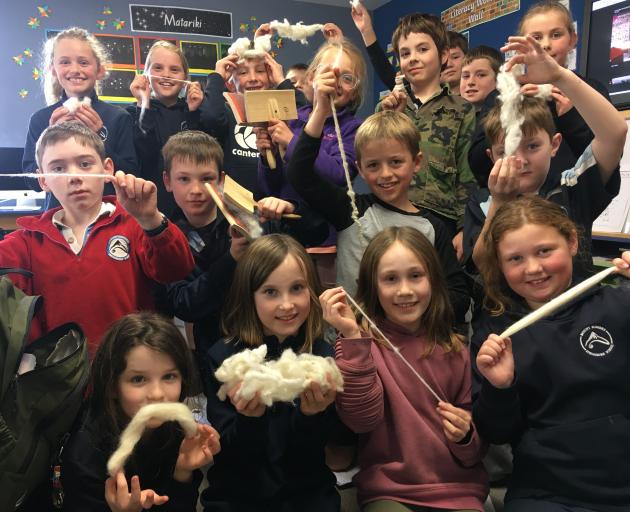
Pupils at Mt Somers Springburn School have been learning all about wool and its uses.
The topic, reinforced by the arrival of The Wool Shed (a shipping container filled with information, equipment and activities) at the school for two weeks, has spurred their learning on farming and the different economic uses of land.
Wool, which is enjoying a resurgence in popularity, is in clothing, carpets, curtains and insulation.
It is used in recreation; one sheep fleece can be used to cover 520 tennis balls.
And it’s fire-resistant.
All the school’s 85 pupils in years 1-8, spent time learning from the various activities inside the shed. There was a work booklet, videos and tools.
The Wool Shed, available to schools in both the North Island and South Island free of charge, is sponsored by PGG Wrightson.
It gives pupils hands-on learning, including taking raw wool, carding it (removing the knots with a comb) and spinning it with a drop spindle to make yarn (loose strands of wool twisted together as a stronger fibre).
A few pupils also spent time with PGG Wrightson wool buyer Doug McKay who visited the school to talk about wool’s benefits, how quickly it grew, the best wool to use for different products and how it was processed.
Among those pupils were Madaleine Roy (12), Archie Rooney (12), Caleb Greer (11) and Isaac Giera (10).
They learned about the different breeds of sheep and how their wool was used for different things.
Romney wool was often used to make carpet and merino wool was popularly used for clothing.
Wool was also used in pillows, duvets and insulation and did not burn until the temperature become very hot.
It is also used in the aviation industry with interior trimmings and sound-proofing, clothing such as socks and nightwear, uniforms for military, fire and police personnel, medical care with dressings and bandages, and in PPE.
Madaleine and her year 8 classmates also chose to dye the wool using natural products such as beetroot, onion, walnuts, coffee and gorse flowers, discovering natural white wool is easy to dye.
Wool is also waterproof and full of lanolin which is good for cracked skin.
The children also learned about export destinations for New Zealand wool. China took 49.9% of the wool exported, followed by United Kingdom (8%) and Italy (7.6%). Also they heard how a Banks Peninsula farming couple had changed their farm practice from crossbred sheep to a clothing range producing merino wool jerseys initially for schools to fill a need in the market.













